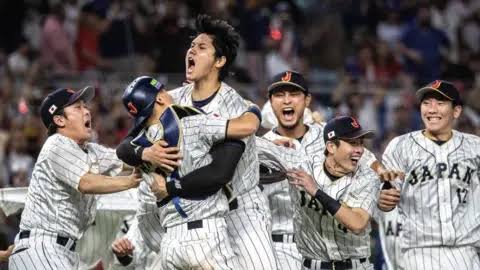Japanese baseball stands as a testament to the nation’s ability to take a foreign sport, refine it, and elevate it to a level that rivals—and in some ways surpasses—its American counterpart. While Major League Baseball (MLB) in the United States often dominates global conversations about the sport, Nippon Professional Baseball (NPB), Japan’s top league, has carved out a distinct identity that blends athletic excellence, cultural uniqueness, and an almost unparalleled fan experience. From the precision of its players to the passion of its supporters, Japanese baseball is a phenomenon that deserves far more international recognition than it typically receives.
At the heart of Japanese baseball’s impressiveness is the sheer skill of its players. The NPB, founded in 1936, has grown into a highly competitive league that consistently produces world-class talent. Stars like Shohei Ohtani, who transitioned from NPB’s Hokkaido Nippon-Ham Fighters to MLB stardom with the Los Angeles Angels and later the Dodgers, exemplify the caliber of athletes Japan cultivates. Ohtani’s ability to dominate as both a pitcher and a hitter—a feat rare in modern baseball—didn’t emerge out of nowhere; it was honed in Japan’s rigorous baseball ecosystem. Similarly, players like Ichiro Suzuki, who amassed over 3,000 hits in MLB after a stellar NPB career with the Orix BlueWave, showcase the technical mastery Japanese players bring to the game. The NPB emphasizes fundamentals—precise fielding, disciplined hitting, and strategic pitching—resulting in a style of play that’s both elegant and effective.
Beyond individual talent, Japanese baseball impresses with its team-oriented approach. Unlike the MLB, where star power often overshadows collective effort, NPB teams prioritize harmony and strategy. This is evident in the meticulous preparation for games, where players spend hours practicing situational plays and refining techniques. The result is a brand of baseball that’s less about home run heroics (though those certainly exist) and more about small-ball tactics—bunts, stolen bases, and sacrifice flies—that keep games dynamic and unpredictable. This disciplined style has proven its worth on the international stage, too. Japan has won the World Baseball Classic three times (2006, 2009, and 2023), more than any other nation, cementing its status as a global powerhouse.
The cultural elements of Japanese baseball add another layer of fascination. Baseball arrived in Japan in the 1870s, introduced by American expatriates, and over time, it became deeply ingrained in the national psyche. Today, it’s not just a sport but a cultural institution. NPB teams, like the Yomiuri Giants or Hanshin Tigers, inspire devotion akin to religious fervor. Fans don’t merely cheer; they perform choreographed chants and songs unique to each player, turning stadiums into cacophonous celebrations of unity and spirit. Koshien Stadium, home to the annual high school baseball tournament, is perhaps the pinnacle of this passion. The summer championship, broadcast nationwide, draws millions of viewers and showcases teenage players whose skill and composure rival professionals. For many Japanese players, Koshien is the first step toward an NPB career, making it a crucible of talent and tradition.
The fan experience in Japan is another reason the sport stands out. Unlike the often laid-back atmosphere of American ballparks, Japanese games are immersive spectacles. Supporters arrive armed with drums, trumpets, and banners, creating an electric energy that lasts all nine innings. Concession stands offer bento boxes, ramen, and sake alongside hot dogs, reflecting local tastes. Cheerleaders and mascots roam the stands, while between-inning entertainment—think synchronized umbrella dances—keeps the crowd engaged. This isn’t passive spectatorship; it’s a participatory ritual that binds communities to their teams. The Hanshin Tigers’ fans, for instance, are legendary for their intensity, famously leaping into Osaka’s Dotonbori River after big wins—a tradition both chaotic and endearing.
Japanese baseball also impresses with its resilience and innovation. The NPB has weathered challenges like World War II, economic shifts, and competition from soccer, yet it remains a cultural juggernaut with 12 teams drawing millions of fans annually. The league has embraced modernity, too, with advanced training facilities, data analytics, and international scouting that keep it competitive. Meanwhile, the posting system, which allows NPB players to move to MLB, has fostered a talent pipeline that benefits both leagues while showcasing Japan’s ability to produce global stars.
In short, Japanese baseball is a marvel of skill, tradition, and passion. It’s a sport that honors its roots while pushing boundaries, blending artistry with athleticism in a way that’s distinctly Japanese yet universally captivating. Whether it’s the crack of a bat at Koshien, the roar of a crowd in Tokyo Dome, or the sight of a pitcher like Yoshinobu Yamamoto baffling hitters before heading to MLB, Japanese baseball proves time and again that it’s not just impressive—it’s extraordinary.
Hits: 135

This little blog really sucks. I could make a better website in 7th grade. Your writing is pretty terrible too. Consider changing careers please. Consider just being a better person too. The sport (and the world) would benefit from it. Do better, say less.